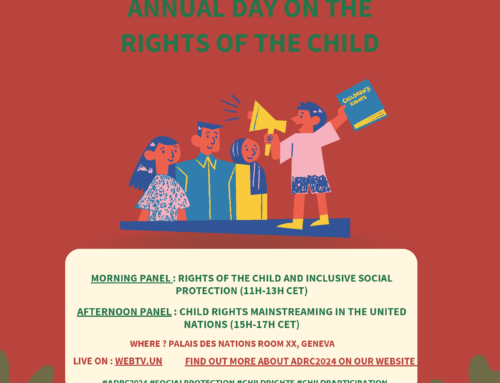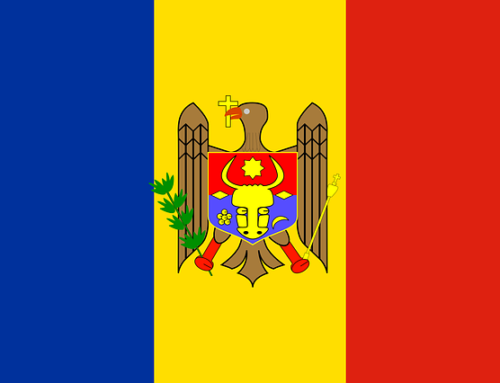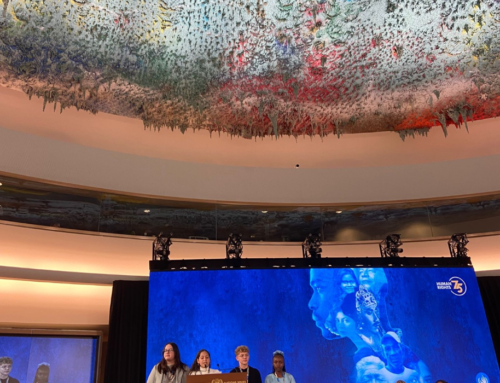On 14 and 15 June 2021, more than 40 local, national, regional, and international child rights organisations and coalitions from around the world, all members of the Child Rights Connect network (who share a vision of realizing children’s rights through the United Nations (UN) human rights system), gathered for the organisation’s Annual General Assembly. The General Assembly is the highest governing body of the network. For the second consecutive time, the meeting was held online due to travel restrictions related to the COVID-19 pandemic.

This General Assembly constituted a key moment in the life of the network on several counts. Taking a critical look at the functioning of the network, member organisations adopted a new pilot aimed at improving the work and functioning of Child Rights Connect Working Groups, as well as a new pilot aimed at further strengthening the network’s active and balanced membership. The pilots, developed in consultation with working group convenors, key partners and the Executive Committee, will run for the balance of the 2020-2024 strategic cycle, concluding with an evaluation of their operation and consideration of whether to then make permanent changes to the Child Rights Connect Statutes.
“The pilots constitute strong signals that the network is taking seriously issues of its functioning, effectiveness of its Working Groups, and an active and diverse membership, as key enabling factors of impact for the millions of children reached by the network”, said Alex Conte, Child Rights Connect Executive Director. Notably, the expansion of the status of observers within the network will open participation in the life of the network to child-led initiatives and organisations, children’s Ombuds, National Human Rights Institutions (NHRIs), universities and public-private partnerships. This will allow further diversification of network expertise; improving linkages between children, adults and institutions involved in the defence of children’s rights; and building more strategic partnerships with institutions and other stakeholders around thematic priorities.
To better mainstream child participation in advocacy before the UN, member organisations also established a new Working Group on child participation, at the suggestion of World Vision International. In 2020, a Task Force including several member organisations and Child Rights Connect Secretariat was set up to lay the groundwork for this, including to develop the Terms of Reference of the new Working Group. Several member organisations restated their interest in joining and/or supporting this collaborative structure to advance child participation across the UN.
Additionally, five new member organisations from four different continents were welcomed to the network: Child’s Destiny and Development Organization (CHIDDO) in South Sudan; Campaña Latinoamericana por el Derecho a la Educación (CLADE) in Brazil; Heirs to Our Oceans (H2OO) in the USA; Kindernothilfe (KNH) in Germany; and Red por los Derechos de la Infancia en México (REDIM) in Mexico. With three of these organisations based in the Global South, this marks solid progress towards further realizing the commitment made in Child Rights Connect’s Strategic Plan to diversify its membership with a particular focus on increasing membership from the under-represented regions of Africa, Asia and Latin America.
The governance of the network was also further strengthened and diversified by the first-time election to the Executive Committee of Maria Belen Paz Aguilar (Bolivia) from the Learning for Wellbeing Foundation and Maria Lucia Uribe Torres (Colombia) from Arigatou International as well as the re-election of Sigurd Johns from Save the Children International. With these changes, the Executive Committee further improves its regional representativeness (with half of the members now coming from the Global South) and continues its gender balance (with around 62% of its members being women). These are also priorities identified in the organisation’s Strategic Plan.
Reviewing Child Rights Connect’s 2020 public annual report, member organisations collectively reflected on the most significant results achieved by the network in 2020, in the unprecedent context of the COVID-19 pandemic, which unveiled the lack of child rights mainstreaming. Members commended “the significant work done in very extraordinary times”, particularly welcoming increasing child participation within the organisation and growing professionalization in the management of the organisation, as well as identified the remaining gaps and key priorities to be addressed to make children’s rights a reality.
Building on this reflection, the strategy and plans for the current year were discussed and validated, along with the budget. Members also welcomed the healthy financial results for 2019 and 2020 and encouraging prospects for 2021, despite the fragile economic environment fueled by the sanitary crisis. Further, members showed appreciation for the first ever organisational Operational Plan which clarifies how the Child Rights Connect Secretariat goes about delivering against the organisation’s mission, outlines the means for action, and helps build consensus within the network on how the work is conducted.
Like last year, this General Assembly will be followed by a further series of webinars focusing on specific substantive topics to which all member organisations will be invited, to take forward the priorities collectively identified.










Leave A Comment